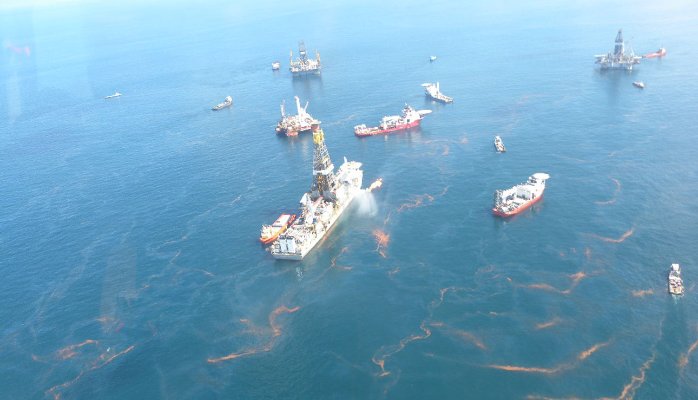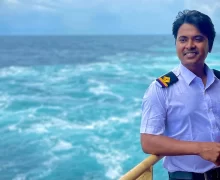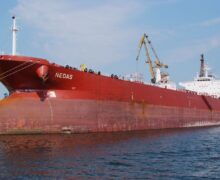
History of Oil Pollution at SEA by Ships & Development of MARPOL Convention & US OPA 90 ACT : INAM ILAHEE (9th)
1954 = MARPOL CONVENTION adopted – Prohibition of Oily discharge within 50.0 n. miles from the Coasts.
And 100.0 n. mls from all Special Areas, particularly endangered areas. (e.g. Great Barrier Reef).
1967 = MT TORREY CANYON went aground at the Entrance of English Channel, spilling it’s entire 120,000 MT Crude Oil – the biggest disaster at that time. This incident raised questions about measures then in place to prevent oil pollution from ships and also exposed deficiencies in the existing system for providing compensation following accidents at sea.
1967 = MARPOL PROTOCOL – IMO Called an extraordinary session of its Council, which drew up a plan of action on technical and legal aspects of the Torrey Canyon incident.
1969 = Then, the IMO Assembly decided in 1969 to convene an International Conference in 1973, for Reduction of Operational Oil Discharge, Change design of Vessel, and also for MARPOL enactments against Contamination of Sea, Land and Air by ships.
In 1950s, the only way the Oil Tanks were washed, was by spraying with hot sea-water jets, which were thrown overboard, before loading fresh Oil cargo. But in 1969 technical advances improved the vessels and further Amendments were adopted to reduce even greater reductions in Operational Oil Discharges.
Technical Developments introduced, such as “LOAD on TOP” – which reduced 800 MT of Oily discharge per large Tankers (into Sea) after Tank Washing with sea-water to remove sludge sticking with Tanks walls. Though this “Load on Top” started mainly for saving cargo-owner’s money, it’s Environmental advantage were huge. These actions saved Pollution into world Oceans at the rate of 8.0 Mil MT per year.
In late 1970s, Crude Oil Washing ( COW ) was introduced, as an improvement to LOT, i.e. Washing Tanks with Crude Oil itself, instead of washing Tanks with Sea-water for “Load on Top”, thus reducing discharge of Oil from Cargo residue, to almost NIL. The hot sprayed oil (Crude) dissolves the sediments on the tank walls, leaving no SLOP on board.
1973 Nov 2 = The International Convention for the prevention of Pollution from Ships (MARPOL) took Place at IMO. This covered Pollution by discharge into Oceans – 1. Oil, 2. Chemical, 3. Harmful Substance in packaged form, 4. Sewage & 5. Garbage.
1976 = Tanker ARGO MERCHANT grounded off Massachusetts, USA causing a great loss of Fishing Grounds, etc. raising much concerns. 27,000 MT of Oil Spilled into the Sea, it’s oil sleek threatening New England resorts.
1976 -77 = After Argo Merchants incident, etc. SOLAS 1974 was Amended, to include Crew Training not only for Safety Drill but also to include Pollution Drill. At that time 1973 MARPOL did not enter into force, therefore 1978 MARPOL Convention accepted all MARPOL (1973) resolutions, making “Crude Oil Washing” mandatory, CBT (Clean Ballast Tanks) for Product Tankers (with common pipelines), etc.
1978 Feb = MARPOL Protocol took measures regarding Tanker Design and Operations, which were incorporated into a Protocol of 1978 relating to the 1974 Convention on the Safety of Life at Sea, 1974. (mentioned above)
The Convention includes regulations aimed at preventing and minimizing pollution from ships – both accidental pollution and that from routine operations – and currently includes six technical Annexes. (Chronologically mentioned below).
This MARPOL Convention is the main International convention covering prevention of pollution of the marine environment by ships from operational & accidental causes. This is a combination of two treaties adopted in 1973 and 1978 respectively and updated by amendments through the years.
1983 Oct 2 = International Convention for Prevention of Marine Pollution from Ships, 1973 was modified in 1978. That entered into force on Oct 2, 1983.
a) Making mandatory Annex I = Regulations for Prevention of Pollution by Oil.
April 6, 1987 =
b) Making mandatory Annex II = Regulations of Control of Pollution by Noxious Liquid substances in Bulk .
Dec 31, 1988 =
e) Making mandatory Annex V = Prevention of Pollution by Garbage.
1989, Mar = MT EXXON VALDEZ went aground at Prince William Sounds off Alaska, carrying 1.2 Mil barrels Crude Oil – appxly 180,000 MT and spilled appxly 35,000 MT of Crude, causing the biggest disaster in a heavy fishing zone, with largest media coverage.
1990 = OIL POLLUTION ACT (OPA 90) Bill is passed in US Senate after Exxon Valdez incident, to upgrade existing legislation, amending Federal Water Pollution Control Act (FWPCA) detailed in 33 CFR Chapter 1 published by USCG.
This comes into force in US waters within Exclusive Economic Zone (20 n.mls) and vessels must comply with both Federal and State legislation of the ports they intend to enter. In addition, OPA 90 identified the need for all geographic areas of USA to produce “Area Response Plans” that would be implemented if an incident occurred in that COTP Area.
OPA 90 is presently reshaping the Pollution Legislations around the world. Later, double hull Tanker building became mandatory.
OPA 90 – 33 CFR Parts 155.1030 = General Response Plans requirements – detailed in VRP.
Requires Owner/Operator to place contracts with private companies which will respond to an oil spill or substantial threat of an oil spill. Also requires additional back-up insurance cover (33 CFR 138 – Alaska & California states require State COFR) and Contingency Plans.
– 33 CFR 155.1035 = Response plan requirements for manned vessels carrying oil as a primary cargo.
– 33 CFR 155.1055 = Crew members Training -PREP. (Appendix C)
July 1, 1992 =
c) Making mandatory Annex III = Pollution from Harmful Substance carried by Sea in Packaged form.
1997 = Internation Safety Management (ISM) Code became mandatory by IMO. Further IMO resolution A. 852 (20) “Guidelines for Structure of Integrated System of Contingency Planning for Shipboard Emergency” was introduced. This, along with Shipboard Training for Crew members for both Safety and Anti-Pollution became important.
1999 Dec = MT ERIKA broke into two parts off Brittany Coast of France and Sank. All crews were saved, but 14,000 MT of HFO was spilled from it’s 30,000 MT cargo of Heavy Fuel Oil.
Captain from Delhi was in Paris Jail for 2-3 years. Owners refused to recognise him in BBC news interview. Tourism Loss of France was disastrous.
2002 Nov = MT PRESTIGE , a poor condition Tanker sank 130 n. mls off NW coast of Spain, where 70,000 MT Heavy Fuel Oil sank to bottom of Ocean and 20,000 MT HFO leaked & created ecological disaster along coastline of Spain with Losses of $100 Mil to clean up and with consequential Loss of fishing industry standing at $330 Mil.
Sept 27, 2003 =
d) Making mandatory Annex IV = Prevention of Pollution by Sewage from ships.
May 19, 2005 =
f) Making mandatory Annex VI = Prevention of Air Pollution from ships.
[ State Parties must accept Annexes I and II, but the other Annexes are voluntary.]
CAPT. M. INAM ILAHEE;
onboard MT HIGH CURRENT; DATE : 3RD APRIL, 2015.







![[নোঙর 2016] আমার সেরা বিদেশ ভ্রমন : নাফিসা মাশহুরা ইরা](http://bdmariners.org/wp-content/uploads/2016/06/Dubai-city-tour-70x70.jpg)




Recent Comments